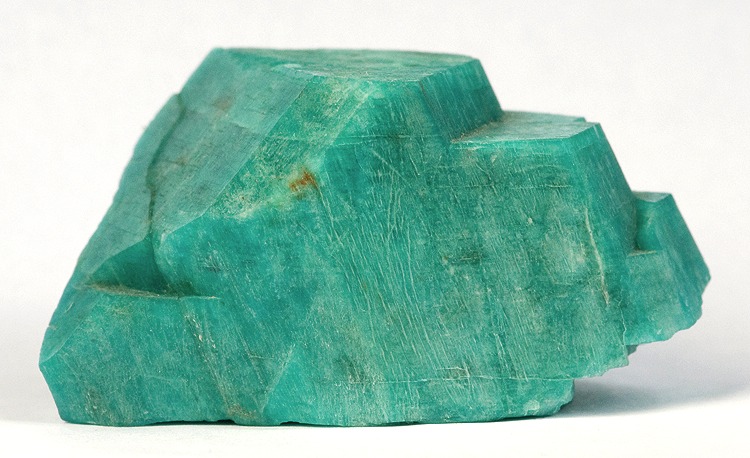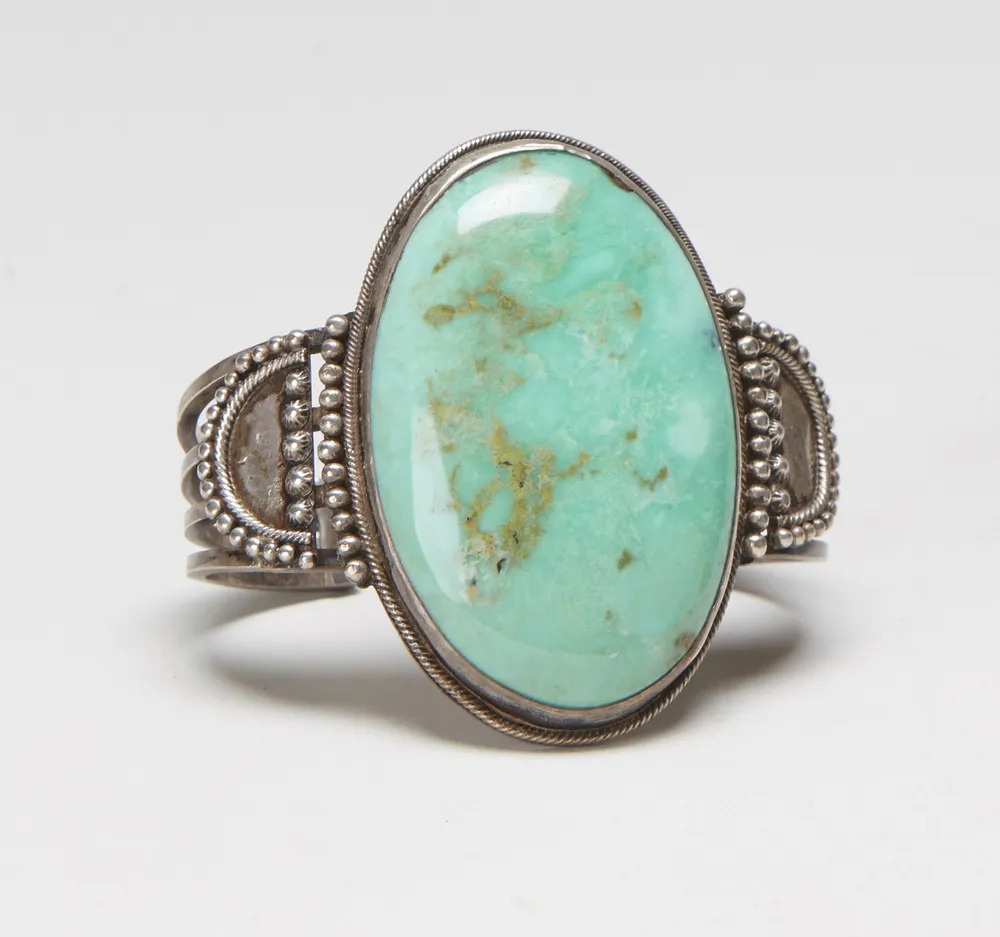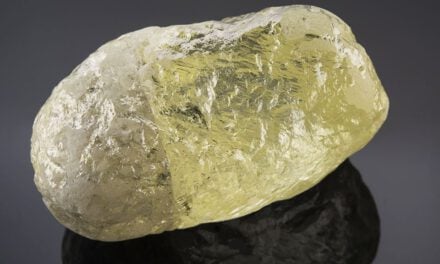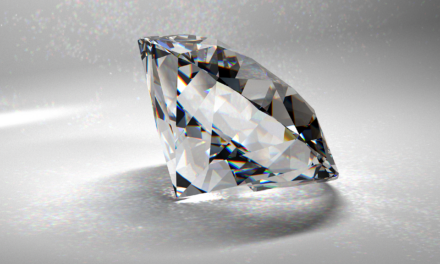What is Amazonite?
Amazonite is a green-coloured variety of microcline – a potassium-rich member of the feldspar group of minerals. Its chemical composition is KAlSi3O8. This stunning green gemstone was first named the “Amazon Stone” after the Amazon River. The name then evolved into a more gemstone-suitable name “Amazonite”. However, some vendors often call it the Amazon Jade to associate this gem with more famous and popular Jade gemstones and increase its value on the market.
Where Does Amazonite Come From?
As the name suggests, we should be able to find this green gemstone near the Amazon, right? Well, that’s what a lot of people thought at the time. But they were proved wrong. So where does it come from, and what’s its history?
Origin and History
Amazonite has been used in the past by many cultures for various reasons. In Ancient Egypt, amazonite was an adored and favoured gemstone of royalty and wealthy people of high society. Egyptians created diverse beaded jewellery, amulets and ornamental figures with amazonite. Some of these jewellery pieces were revealed in The Valley of the Kings inside King Tut’s burial chamber.
Another proof of the popularity of amazonite jewellery in Ancient Egypt is the extravagant gems and jewels carved from amazonite, which were discovered in Tutankhamun’s tomb. Another great discovery is an amazonite gemstone in the King’s golden mask. Also, amazonite has been associated with the Book of the Dead. Egyptians used amazonite to carve tablets displaying some chapters of the Egyptian funerary rites.
Although amazonite was named after the Amazon River by Johann Friedrich August Breithaupt in 1847, there are no known deposits of this gemstone in or near the Amazon River. The rumour that amazonite can only be found in or near the Amazon River started in the 19th century and was eventually debunked. Many people believe that there has been a mix-up between amazonite and another gemstone of a similar colour.
Geographic Locations
Amazonite is not a commonly found gem. In the past, it was mined exclusively from Miass in the Ilmensky Mountains near Chelyabinsk, Russia, where the gemstone occurred in granitic rocks. Amazonite is today acquired from various global mining sites, such as Turkey, Kuwait, the USA, Syria and China. You can also find some minor deposits in Brazil (but not near the Amazon river) and Madagascar. A popular and well-known mining site is along Pikes Peak in Colorado, USA. Many pieces of Colorado’s amazonite occur alongside smoky quartz.
What are the Properties of Amazonite?
Amazonite is indeed a wonderful and exquisite gemstone that has unique properties that are like no other. Although it can have some disadvantages on the durability side, it is still a beautiful gemstone that deserves your attention.
Colour
Amazonite occurs in a wide range of blues and greens. These colours can be pale, pastel or even vivid with high saturation. Traces of lead are probably responsible for the colour of amazonite. It can be challenging to find amazonite with a solid colour. Streaks of white quartz usually complete the greenish-blue colour of your amazonite gemstone. Amazonites are generally translucent or opaque and have a stunning pearly lustre. Semitransparent amazonite is rare.

Hardness and Durability
Unfortunately, amazonites are softer than other jewellery gems. It has a hardness of 6 to 6.5 on the Mohs scale of hardness, which allows it to be scratched and damaged permanently by many objects during everyday wear. Amazonite has two directions of perfect cleavage – which causes another issue as it can be easily broken into pieces when accidentally struck.
Despite these potential problems, amazonite is still a beautiful and excellent stone for earrings, pendants and pins. Amazonite can also make a beautiful ring when set in a protective setting.
Metaphysical Benefits
Many believe that Amazonite holds many metaphysical powers that help to heal physical and psychical matters. Similar to jade, amazonite is often associated with promoting good luck and fortune, which is why it is known as the ‘gambler’s stone’. Amazonite is a soothing stone that can calm the whole body – especially the nervous system. Amazonite is great at eliminating negative energies, irritation and blockages while enhancing love for others and yourself.
How is Amazonite Used in Jewellery?
Due to its beautiful and timeless blue-green colour, amazonite can be a desirable gemstone for some. Amazonite is often cut into various cabochons for your necklaces and pendants. Many get inspired by the history and carve amazonite into figurines, statues or other decorative ornaments. Also, as mentioned above, it can be used in rings, earrings or brooches, despite its low durability.
Amazonite looks stunning with any precious metal, but especially silver makes this blue-green gemstone look ravishing. Leather or ribbons create an intriguing and unique design when paired with amazonites. For a soft and elegant look, combine this gem with moonstones or diamonds.

Summary
Amazonite is truly a wonderful gemstone full of history, beneficial metaphysical properties and elegancy in the jewellery world. Now that you’re familiar with this gorgeous gemstone, it’s up to you whether you include it in your jewellery collection. If you’re thinking of buying a unique piece of amazonite jewellery, make sure you’re buying real amazonite and not so-called ‘Amazon jade’.
Tips for Buying Real Amazonite Jewellery
Many stones may look similar or identical to amazonite, so being able to identify fake amazonite on the market is essential. Real amazonite is typically quite bright and seems additionally polished even though it’s not. So if the amazonite-like gemstone you’re looking at appears dull or without lustre, it isn’t real. Also, as we all know by now, amazonites are not scratch resistant, so trying to carve into less prominent parts of the stone should result in a scrape.




